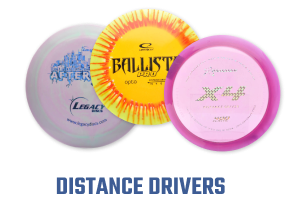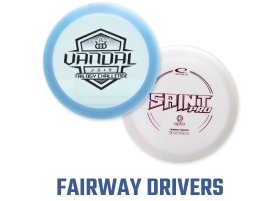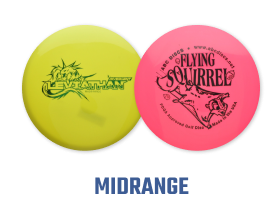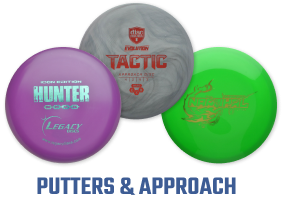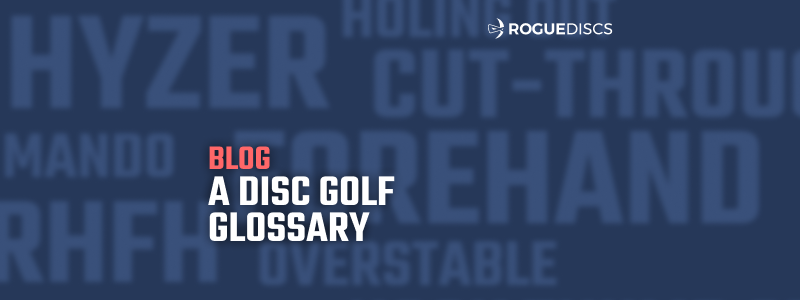
Hyzer, anhyzer, thumber, and grenade. Overstable, understable, turn, and fade. Just getting into disc golf, I remember all of this sounding like a foreign language. Sitting in front of the used bin at my local store, I found myself constantly looking up terms and reading full articles describing all the jargon known only to those who huck the disc. There are a few lists like the one I’m about to do, but this may have a few new ones thanks to the good people of the r/discgolf subreddit. I asked for some disc golf terms people wished they knew sooner but also for some local phrases people use and got back over 500 responses. Here’s my best attempt to compile and sort all the simple need-to-knows and some of the more…local jargon that you may have never heard before.
Compiling this list, I considered going alphabetically, head-to-toe style, or just throwing y’all to the wolves and leaving it in the order of “Reddit comment section.” Ultimately, I decided to sort terms by relevance as they would be brought up in conversation, but I’m sure halfway through, I’ll be scrambling, so to speak. Here goes nothing.
Angles
Hyzer and Anhyzer – One of the most common phrases in disc golf, but perhaps one of the most foreign at the beginning, these two throw people for a loop. If you hold a disc out in front of you and tip it left or right, you’re tipping a disc on hyzer and anhyzer, depending on if you intend to throw it forehand or backhand. To avoid the confusion of forehand, backhand, left hand, and right hand, the simplest way to remember if a disc is on a hyzer or anhyzer angle is as follows: If you’re about to throw and the edge of the disc that is furthest from your hand is up, that is on an anhyzer angle. If the edge is down, that’s a hyzer. Another way I’ve heard it described is that hyzer is “with the grain” in the sense that you’re keeping the angle your throw will fade out on. This is opposed to “against the grain” with anhyzer, forcing it opposite of how the disc will want to drop at the end of the flight.
Nose Up and Nose Down – On a different axis than hyzer/anhyzer, the nose angle has to do with the front of your disc: the edge that is facing where you are throwing. This is a very important consideration when beginning to throw flat or understanding what happens with degrees of nose up/down in varying winds.
Flight Ratings
The numbers on the disc-what do they mean?
Speed – The required arm speed to achieve the rest of the flight ratings accurately.
Glide – the tendency of a disc to hang in the air.
Fade – The simplest to discern when you throw a disc. Take a disc that’s way too fast, and throw it way too slow, and the direction the disc drops out of the air is obvious and also known as fade. More technically speaking, fade is what happens when a disc’s low-speed stability becomes a factor. When a disc runs out of speed, the more stability it has (see “overstable”), the quicker it will want to fade. Generally has to do more with the end of flight.
Turn – Somewhat the antithesis of fade, turn tells you how much the disc wants to fight against its natural fade when thrown up to speed. Because of this, this number usually relates to the in-air portion of the disc’s flight, as opposed to the finish. Discs with a lot of turn will spend the majority of their flight flying opposite of its expected fade.
Example:
A TeeBird has 0 Turn and 2 Fade, so thrown up to speed, I wouldn’t expect it to fly very much against the direction it wants to finish. When it does finish, it likely does so predictably, with its fair low-speed stability. On the other hand, a Roadrunner has -4 Turn (even though a negative number, this is effectively more turn than 0) and just 1 Fade. For this disc, I would expect it to fly “against the grain” very strongly and probably not fade back to where a more stable disc would finish.
Stability
Overstable – Less turn, more fade. The disc wants to finish to its natural low-speed direction more quickly. The “hyzer” of a disc’s flight, if you will. If you throw an overstable disc, it will want to naturally fly to a hyzer angle. This is also known as beefy or a meat hook. Newer discs will tend to be more overstable than identical molds that have been worn in.
Understable – More turn, less fade. The disc wants to fly against the direction your throw would naturally finish. Somewhat the “anhyzer” of a disc’s flight. If you throw an understable disc, it will want to “flip” to an anhyzer angle in flight, also known as flippy. To many, beat-in discs will be more understable.
Stable – also known as neutral, this will be the straightest stability.
**Flight numbers and stability may differ from expectations based on factors including weather, arm speed, and how many trees the disc may have found.**
Types of Throws
Sometimes you utilize different grips, combined with different angles, and different types of discs to achieve different flights.
RHBH – Right hand, backhand
RHFH – Right hand, forehand
LHBH – Left hand, backhand
LHFH – Left hand, forehand
Backhand – “Reaching” the disc behind you and pulling it across your chest (with proper hip rotation, of course) to throw. Palm and thumb on top, with fingers wrapping under the rim.
Forehand – also known as a “flick,” a forehand throw looks closer to throwing a sidearm in other sports. It uses your wrist and elbow to spin the disc away from your body instead of across it. Fades in the opposite direction of a backhand. “Finger guns” inside of the rim with the palm facing up.
Drive – The first shot of the hole, from the tee pad or designated area, generally with the intention of getting as much distance on the hole as you can.
Approach – Shot used to approach the green, also known as an upshot, generally greater emphasis on accuracy than distance. When successful it’s known as “getting up and down.”
Putt – A softer throw, but usually with a different, more repeatable form and grip to get your disc in the basket
Spin Putt – Putting style with a lot of spin.
Push Putt – Putting style without much spin.
Jump Putt – Initiating a jump as one putts to get more power. Must maintain a point of contact behind lie before the release.
Hyzer – Same as the angle. Just a predictable throw that finishes where the disc naturally wants to fade to. A spike hyzer has an extreme hyzer angle that spikes into the ground.
Flex – Throwing an overstable disc on anhyzer, with the hopes of it fighting out of that angle to finish back on its natural fade angle. Also known as an S-Shot or an S-Curve (“getting a full flex” can also be referred to when you hyzer-flip a disc that turns but still finishes on a fade).
Hyzer-Flip – Throwing something understable or with a neutral stability on a hyzer angle, with the intention of it “flipping” up to a flat angle or all the way to an anhyzer angle.
Turnover – Getting a disc to fly in the opposite direction of where it would normally fade to. Generally, achieved with something understable.
Thumber – An overhand shot with your thumb on the inside of the rim of the disc.
Tomahawk – Also an overhand, but thrown with a grip closer to a forehand.
Grenade – Functional use is similar to thumber and tomahawk, but thrown more like a backhand with the disc upside-down.
Roller – Either forced to the ground on an anhyzer, or an understable disc turned all the way over, a roller is exactly what it sounds like. A throw that rolls across the ground instead of flying through the air.
Skip – Hitting the ground on an angle that makes the disc skip. Not too much going on here.
Worm-Burner – Generally unintentional, a shot that skids along the ground, being thrown too low. Also known as a lawnmower.
Throwler – A shot that was meant to be in the air but turns into a roller.
Fore – What you yell when none of these work out and your shot is heading for unsuspecting parties.
Scoring
Stroke – A throw, in an attempt to complete the hole.
Penalty Stroke – Throws added to one’s score for rule infractions or out of bounds throws.
Par – The anticipated amount of strokes one should need to complete a given hole, also referred to as “even” when one’s overall score is neither under or over par.
Bogey – One shot over par for a hole. Adding “double” or “triple” increases the strokes over par. Double bogey equals two strokes over par and so on.
Birdie – Completing a hole with one stroke less than par.
Turkey – Three birdied holes in a row.
Eagle – Completing a hole with two strokes less than the par. Also a really good disc golfer.
Albatross – Three strokes under par for a hole??? I’m not actually sure, ask Philo.
Ace – Hole in one!
Fairway Ace – Not a hole in one, but still a shot that goes in from what would be a similar distance or difficulty to a true ace. Also known as a throw-in.
Black Ace – When you throw the disc in the basket in one shot from the tee pad, but it’s the wrong basket.
Brown Ace – An Ace, but into a garbage can.
Course Terms
Lie – Where your disc comes to rest.
Tee Pad – The designated area, usually concrete or turf, where players tee off and begin a hole from. Also known as the tee, tee box, or just the box.
Fairway – The designed path of the hole from the tee to the basket.
Rough – Anywhere off the fairway, can be tricky to impassable, which is otherwise known as jail.
Green – General area where players expect to reach to putt from to complete the hole.
Circle – Physical measurement on the green, a ten-meter circle around the basket. Also known as circle one.
Circle Two – Another circle that is from 10 meters to 20 meters around the basket.
Basket – The target you’re trying to get your disc in. Normally a metal bucket with chains.
Drop Zone – A designated area, sometimes another tee, one progresses to after throwing out of bounds or after missing a mando (defined below).
Island – An inbounds portion of the course surrounded by OB.
Landing Zone – An area one aims for to set up the next shot.
Tee Sign – A sign telling distance and direction and par for the hole, sometimes providing a map.
First Available – The first tree located from the front of the tee pad, often attractive to round plastic.
Ceiling – How high you’re able to throw a disc without being impeded by trees or other obstacles.
OB – Out of bounds, an area not in play for the course. Comes with a penalty stroke.
Mando – An object dictating a mandatory route players have to throw.
Hazard – An area of OB with a penalty stroke.
Throwing Mechanics
X-Step – For a backhand throw, when your trailing foot steps behind your lead foot in order to rotate your hips back and prepare for your weight to transfer.
Reach Back – Rotating your shoulders with your hips. This is when people physically reach the disc behind them before pulling forward.
Brace – When the lead leg stops your forward momentum, which you begin to transfer into your throw.
Pull – Rotating hips and shoulders forward to throw, when one “pulls” the disc in front of them. Similar to the motion of starting a lawnmower.
Power Pocket – The point in your throw when hips are engaged, shoulders are square, you’re leading with your elbow, and the disc is being pulled across the front of your chest.
Snap – When your swing is at its maximum acceleration and you spin the disc. That pop that puts that extra pepper on the disc when all the timing is right.
Release – Letting go of the disc.
Follow Through – To continue your natural motion after the disc has been thrown.
Rounding – When the sequence from reach back to release does not carry the disc in a straight line but instead has the disc moving around your body.
Discs
Putter – Slower, straighter disc with a thicker edge; mainly designed for….yup….putting, but also used for short, maximum control throws. Generally, speeds 1-4.
Midrange – slightly faster with a thinner edge, but similar profile to putters; usually used for shots that require putter-like control, but a little more range. Generally, speeds 4-5.
Fairway Driver – Wider rims with thinner profiles, these are faster discs to handle longer throws without sacrificing too much control. Generally, speeds 6-9.
Distance Driver – Very wide rims with a very thin edge; these are the max distance discs with the ability to go the furthest, but also the most difficult to control. Speeds 10 and up.
Utility Disc – A disc for special purposes, usually extremely overstable or extremely understable.
Bead – A raised ridge on the rim of the disc; some discs are beaded, some are unbeaded.
Miscellaneous
Line – The desired or actual flight path of your disc.
Gap – An area through trees or other obstacles you may have to throw your disc through.
Pured – Perfectly hitting a desired line through a gap.
Air Ball – To entirely miss the basket on a putt.
Local Route – A route that is not as obvious as the intended fairway; often used sarcastically, when someone gets lucky through a gap they did not intend to hit.
Card – Group of disc golfers playing a round, more so referring to competitive settings. Usually four people to a card.
Headwind – When the wind is in your face; generally makes discs fly less stable.
Tailwind – When the wind is coming from behind you; generally makes discs fly more stable.
Air Bounce – When wind drastically lifts your disc in the air mid-flight or intentionally done when the disc is thrown downwards with a nose-up angle.
2-Meter Rule – Mainly in California, when a disc is caught in a tree more than two meters off the ground. Penalty stroke applied.
Spit-Out – Hitting solid chains on a putt that should drop into the basket but instead falls out to the ground.
Am-Side – Side of the chains and basket generally avoided when putting due to the chance of spit-out. Left side for right-handed players, right side for the lefties.
Pro-Side – Side of chains desirable for greater chances of one’s putt dropping in. Right side for righties, left for lefties.
Back of Box – The last player to tee off for a given hole; AKA BOB.
Run – When a throw has a chance of going in, usually for lengthy putts, long throw-ins, or aces. Also known as a “bid.”
Lay-up – Opposite of running it. Conceding to a safe play close to the basket instead of trying to make it in.
Tap-In – A putt from nearly under the basket.
Foot Fault – Breaking a rule during your throw. When putting in the circle, you step over your lie before establishing full balance. When outside the circle, and you don’t have a foot on the ground when you release. When driving, having no “support point” in contact with the tee area.
Guardian – An obstacle blocking routes to the green.
Kick – Unintentionally hitting an obstacle, redirecting the disc’s flight.
Tree Direction – Same as a “kick” but specific to trees.
Tree Love – When the tree direction helps your shot.
Scramble – To attempt a more difficult upshot through the rough, from an undesired lie, to get to the green.
Death Putt – A putt with danger in the form of OB or Hazard close behind the basket.
Parked – When a drive or upshot lands close (10 feet-ish) to the basket.
Pin High – A shot that went the distance the pin is from the tee, be missed to the left or right.
Sawed-Off – An early-released throw that hyzers out too quickly.
Grip-Lock – Late releasing a disc on a throw, also known as “yanking” it.
Patent-Pending – A shot thrown facing backwards, normally to create distance from an obstacle.
Nice – A word uttered mid-flight to magically take a perfect line right into a tree.
Local Routes
Some of the ones I’ve never heard of, but I’ll definitely be using from now on, thanks to some answers from Reddit.
Wormhole – When everyone is sure they saw where a disc went down, but you find it 100 feet away.
Birdogie – Having a putt for birdie but missing that as well as the par putt and taking bogey.
Iron Leaf – An impossibly strong leaf or twig that impedes your disc far more than it should.
Elevator-Up – A putt that hits low on the cage and bounces in.
Elevator-Down – A putt that hits high and falls straight in.
That’s…..it? I think. I’m sure there are more. There always is. There’s certainly more to the technical rule side of disc golf definitions and terms, as well as some tour and tournament jargon I’m sure I left out. However, this should be a good place to start for you or anyone you want to direct to wrapping their heads around the expansive and still expanding disc golf lingo. Let me know what I missed in the comments below!

